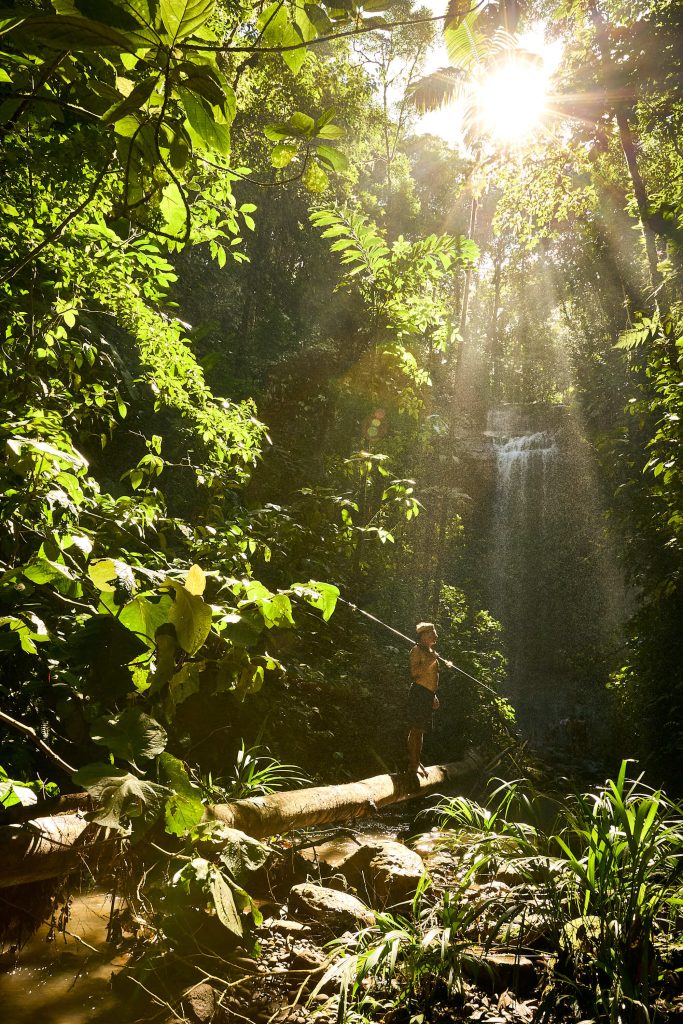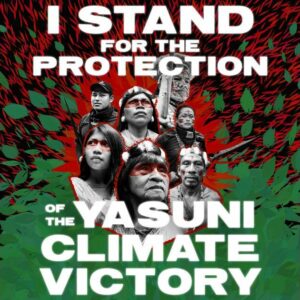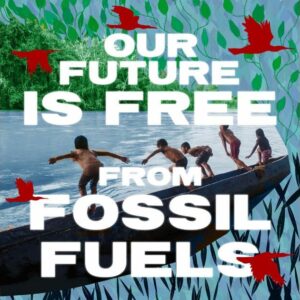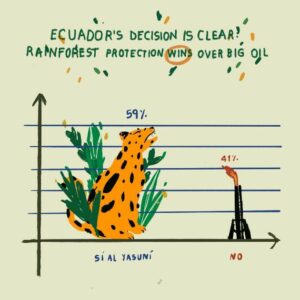Edition: Daniel Voskoboynik and Sophie Pinccetti
Video: NASA’s Scientific Visualization Studio
In international politics, there are often a lot of words and very few actions. However, our rapidly warming climate can no longer wait.
The 2015 Paris Agreement marked a major turning point in the global fight against climate change. Nations pledged to limit global warming to “well below” 2 degrees Celsius, aiming to keep it below 1.5 degrees. These numbers are not just abstract figures but critical guardrails identified by scientists that we need to protect to prevent the worst possibilities of climate change. As many nations highly vulnerable to climate change have declared, “we need 1.5 to stay alive.”
But nearly a decade after Paris, the UN’s 2024 Emissions Gap Report makes one thing abundantly clear: promises have not translated into action. In 2023, global greenhouse gas emissions surged to a record 57.1 gigatons of CO2 equivalent (GtCO2e), a 1.3% increase from the previous year. Despite repeated commitments and proclamations, countries’ emissions continue to climb, threatening critical ecosystems like the Amazon rainforest and placing many coastal communities in grave danger.
Global CO2 ppm for January-March of 2020. This camera move orbits the Earth from a distance. Credits: NASA’s Scientific Visualization Studio
According to the UN report, under current pledges, global emissions could decrease by 3% to 11% by 2030; this fall is nowhere near the rapid reductions needed to avert catastrophic warming. Unless more ambitious action is taken, following current trends, our planet could warm by 2.6 to 2.8 degrees Celsius (4.7 to 5 degrees Fahrenheit) above pre-industrial levels by 2100. This severe level of warming would mark a dramatic escalation from the 1.3 degrees Celsius (2.3 degrees Fahrenheit) warming we are at currently, which is already contributing to devastating heatwaves, droughts, storms, wildfires, and mass extinctions across the world.
The Amazon rainforest is a critical site for addressing the planetary crisis. As one of the planet’s largest carbon sinks, it absorbs massive amounts of carbon dioxide, helping to stabilize global temperatures. Yet a recent historic drought affected the entire Amazon basin, showing how vulnerable the rainforest is to intensifying climate change. Besides global warming, the Amazon biome faces multiple threats from extractive industries, land-grabbers, and complacent governments. All these factors are coming together, threatening to transform the Amazon into a carbon source, jeopardizing the Indigenous communities who depend on it, and worsening the climate crisis.

Photo: Nico Kingman
If we want to maintain any chance of protecting the Amazon and its people, we need to face up to the stark reality: the violent lack of ambition, exemplified especially by the world’s wealthiest countries, is driving us to irreparable damages.
The international community is quite simply failing to address the root causes of climate change, mass extinction, deforestation, and the assault on Indigenous communities. COPs have become platforms for empty political promises, if not open trade fairs for fossil fuel companies, rather than arenas for enforceable action. Unless we wake up to the scale of the problems we face and move rapidly away from business as usual, we will lose our liveable planet.
The massive transformation we need will not come from top-down conferences and decisions, although these spaces are essential. Instead, we have to look towards tried-and-tested climate solutions that are already working. Based on scientific data and our work on the ground, we know that Indigenous governance and autonomy are among the most effective strategies to protect forests and conserve biodiversity. That is just one reason why we urgently need to ensure that Indigenous territories are titled and legally secure in the hands of Indigenous people.


Photos: Martin Kingman
The UN report calls for a sixfold increase in global mitigation investment to align with a 1.5-degree pathway. As part of their investments and climate plans, states need to prioritize Indigenous cultural survival and the protection of environmental defenders everywhere, especially women leaders who are so frequently ignored and silenced. Their knowledges, voices, and perspectives – rooted in centuries of nourishing biodiverse ecologies – are critical to help us navigate the urgency of the moment and show us the path forward.
As international discussions continue, the environmental harm to the planet does not stop waiting for political agreements. The commitment and political will of the rich nations are essential to overturning irreversible ecological damage to the earth. The UN Emissions Report 2024 provides a gloomy scenario for the future. Nevertheless, we cannot protect the Amazon or the livability of our planet without honoring the leadership and expertise of Indigenous guardians. Our work at Amazon Frontlines and through our partners shows what is possible, but much more is needed. Together, we must build a world where Indigenous peoples and cultures thrive because that is the world where all of us will. It may be our only hope.

Photo: Christopher Fragapane




